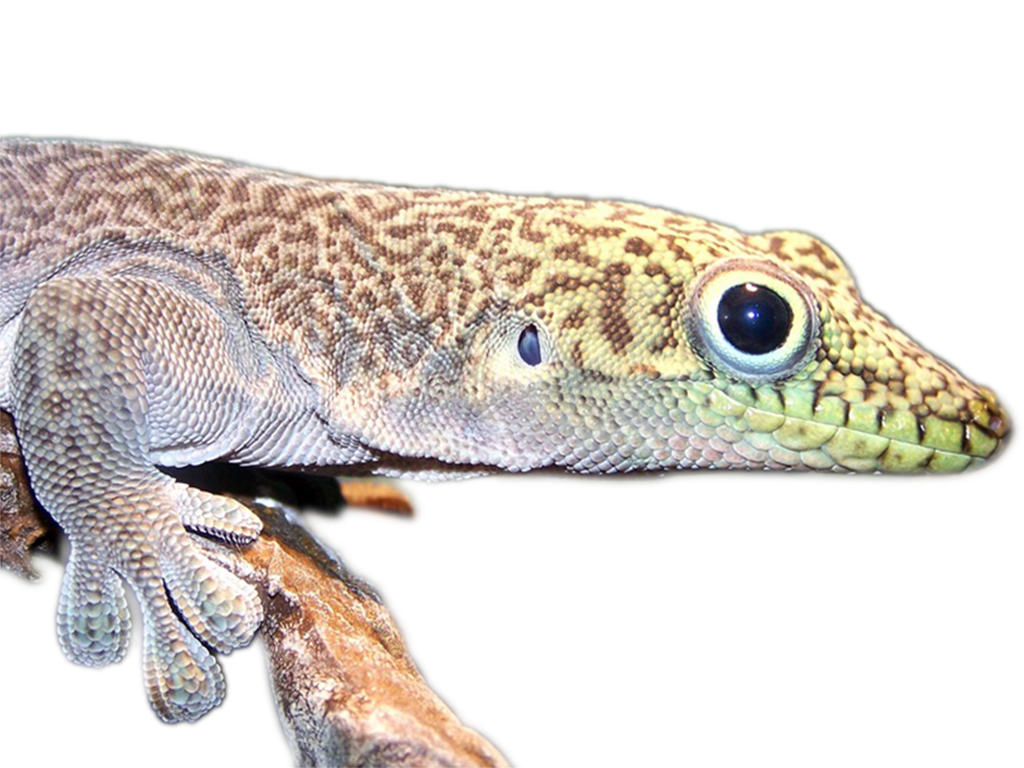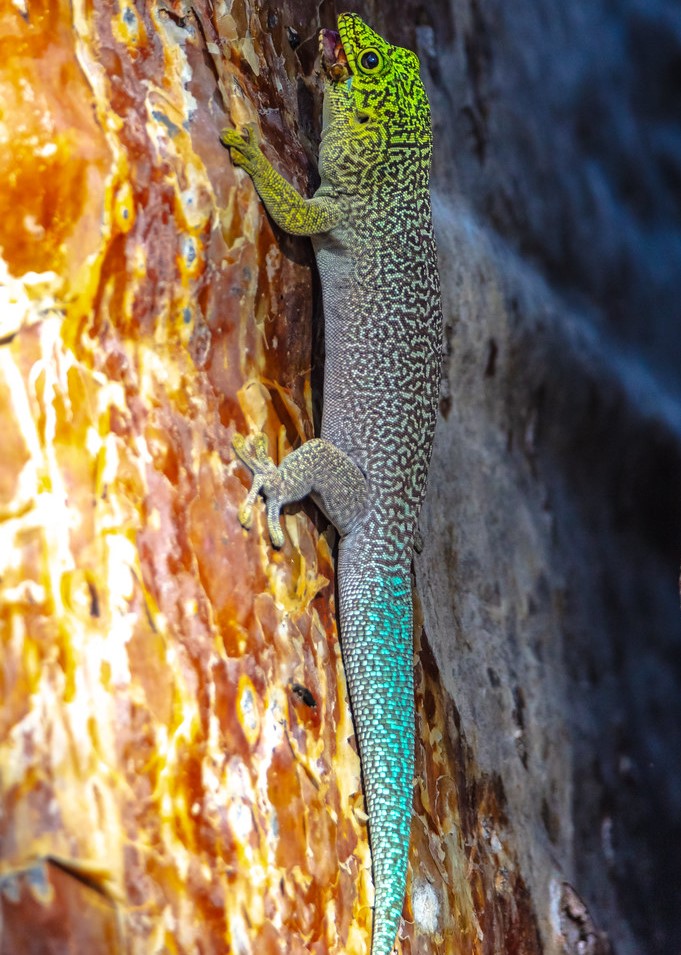Standing’s day gecko
Phelsuma standingi

Hatches with vibrant colours
Standing’s day gecko is, just as the name suggests, active during the day. Most other species of gecko lizards are nocturnal. That’s why they are often brown or greyish in colour, so they can blend in as well as possible when resting on tree trunks during the day. The day gecko group, on the other hand, has bright green colours that provide good cover when they are dashing about or basking among the leaves. The colours of the Standing’s day gecko are at their most intense when they are young, and fade as they mature. Colours can also vary depending on how intense the sunlight is.

Photo: Murray-Foubister-CC-BY-SA
Lives in Madagascar only
Some species are only found in one place in the world. This is called being endemic to that area. Standing’s day gecko is endemic, living in a forested area in the southwest of Madagascar only. The species is declining greatly in numbers, partly due to climate change and deforestation. In addition, Standing’s day gecko is a popular pet, and has been captured and sold on a large scale. When Standing’s day gecko feels threatened, by a predator or a human, it will release its tail. This confuses the predator, and the lizard may run away. Eventually, a new tail grows, but it may not be as long and as big as the first one.
Female Standing's day gecko often has large chalk sacks on the back of their heads.
Photo: Hectonichus-CC-BY-SA
A young Standing's day gecko.
Photo: jerryoldenettel-CC-BY-NC-SA
An adult Standing's day gecko with lighter colours.
Photo: Paul-Ritchie-CC-BY-NC-ND
Chalk sacs on the back of its head
Standing’s day gecko lives in pairs. The easiest way to tell a female from a male is that the female has two distinct skin sacs on the back of her head. These are called chalk sacs, in which the female collects calcium in order to produce good, durable shells for her eggs. Both male and female Standing’s day geckos are aggressive and territorial when it is time for mating. Among geckos, it is common for males to be territorial, but for females it is highly unusual. Once the lizards have mated, the female lays her eggs in a protected cavity in the trees, and the eggs hatch after just over two months.
Distribution worldwide
South-west Madagascar.

Threat based on the Red List

Trade regulations
CITES: B-listed.